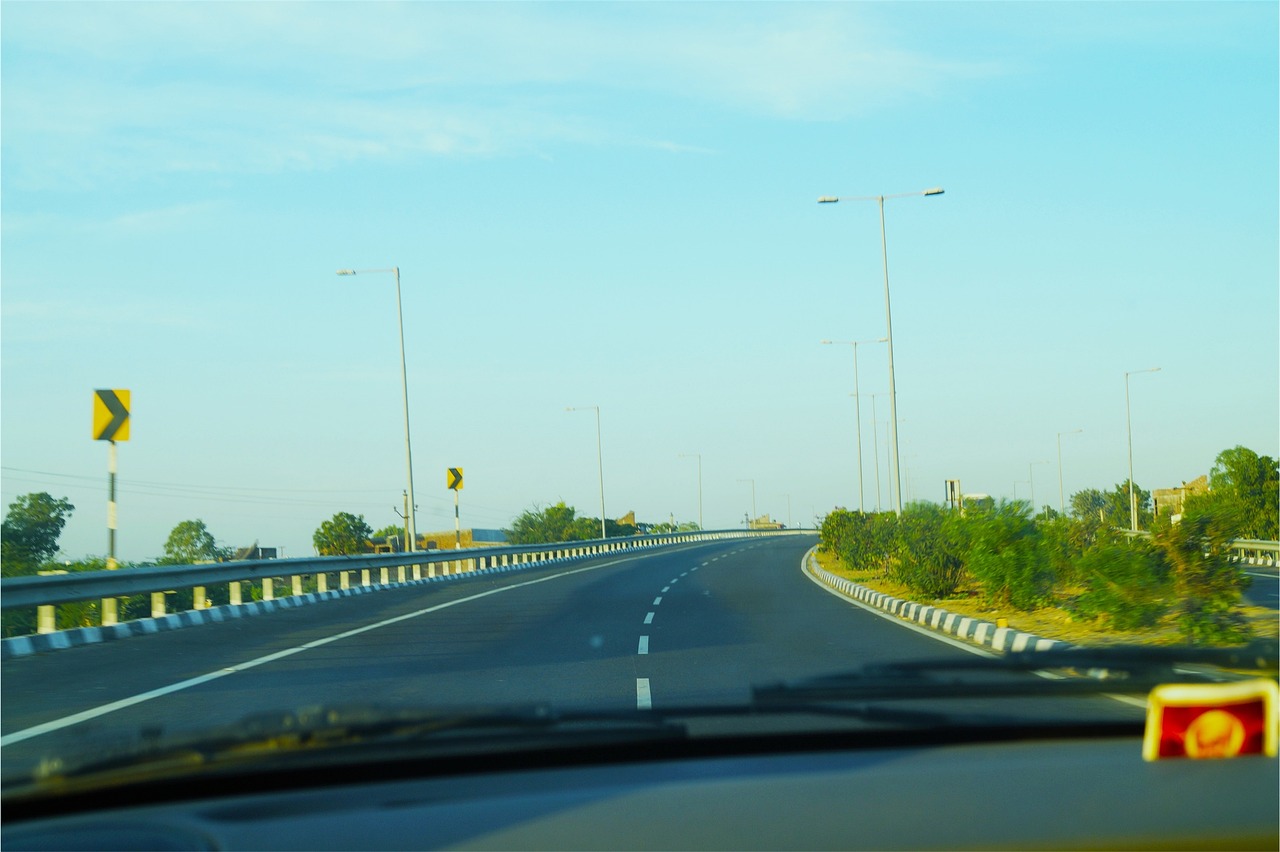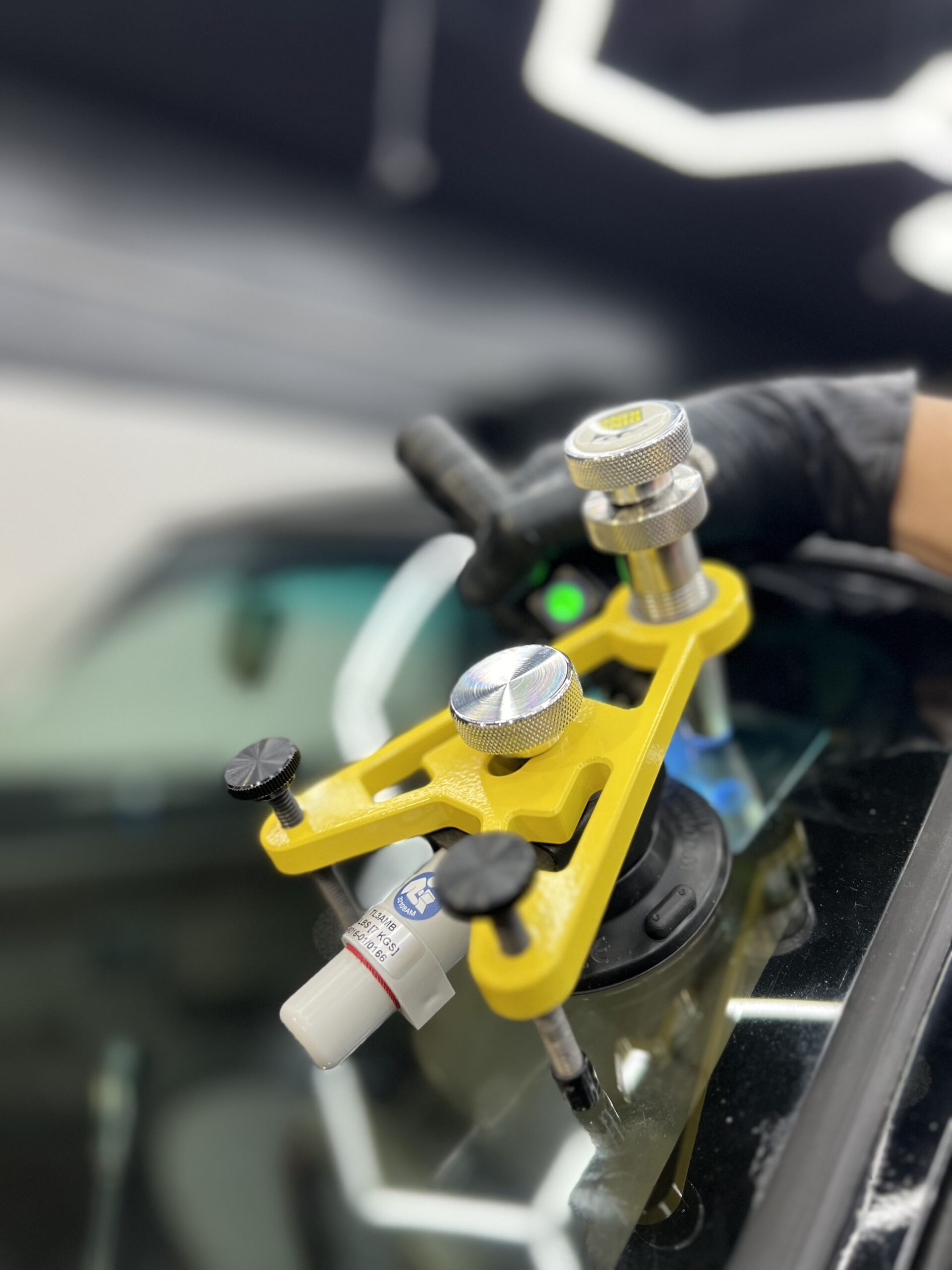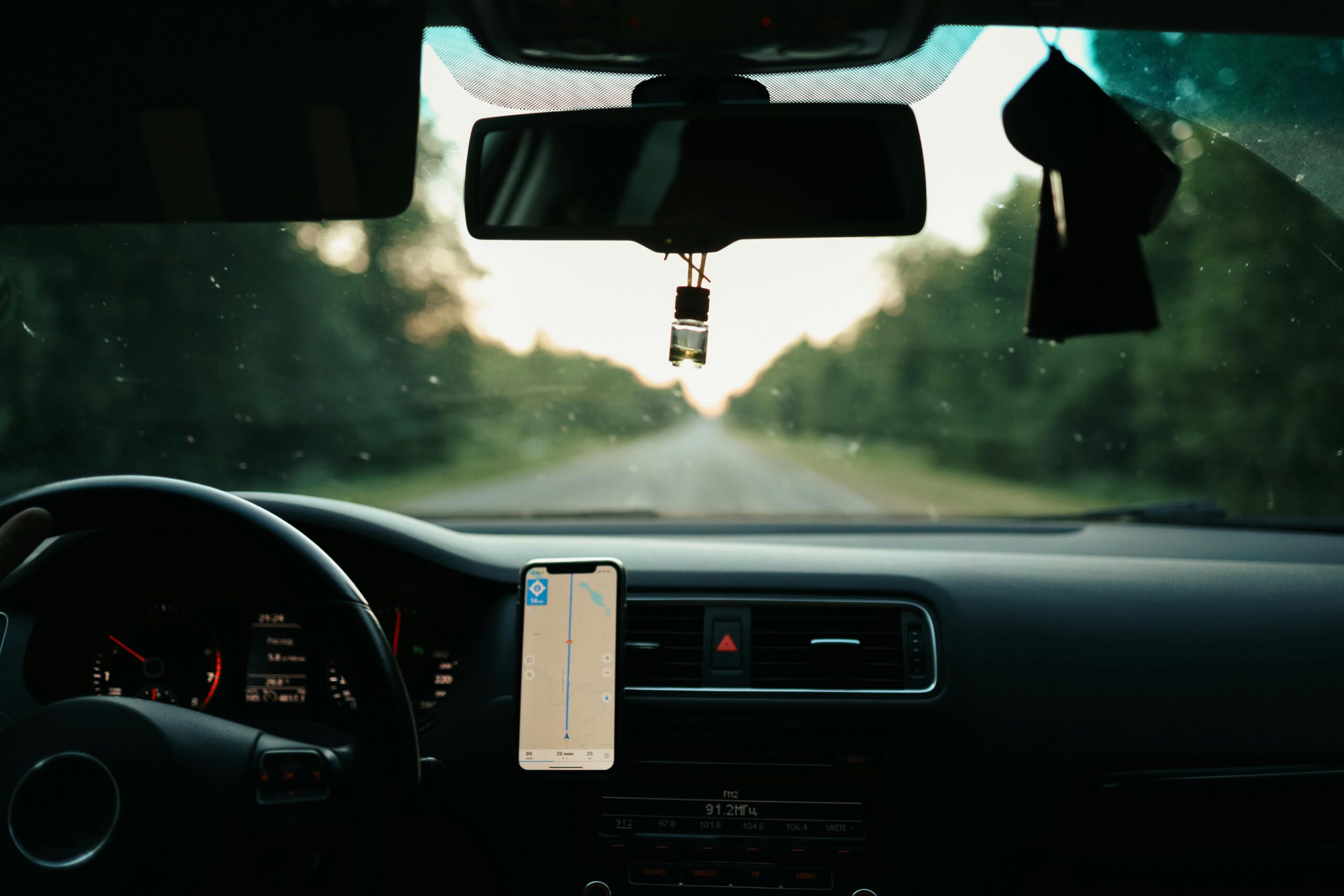Autocare
How Big a Crack in a Windshield Can Be Repaired? A Complete Guide for Drivers
Understanding Repair Limits and Safety Concerns for Windshield Damage
Your windshield is more than just a piece of glass; it’s a vital safety component of your vehicle. It protects you from the elements, flying debris, and even supports the structural integrity of your car during accidents. But what happens when it gets damaged?
Specifically, how big a crack in a windshield can be repaired before a full replacement becomes necessary? This is a common concern among drivers, and the answer isn’t always straightforward.
In this comprehensive guide, we’ll break down everything you need to know about windshield crack sizes, types, causes, repairability, and prevention, so you can make smart, safe decisions for your vehicle.
Why Windshield Health Matters
A cracked windshield might initially appear to be just a cosmetic flaw, but in reality, it poses several serious concerns that go far beyond aesthetics. Even a relatively small crack can significantly obstruct your line of sight, making it more difficult to drive safely and respond quickly to road conditions.
Beyond visibility, a damaged windshield can also weaken the overall structural integrity of your vehicle, which plays a critical role in protecting passengers during accidents or rollovers. In the event of a collision, a compromised windshield may fail to provide the necessary support, increasing the risk of injury.
Additionally, cracks often worsen over time, especially with exposure to temperature changes, moisture, and road vibrations, which can turn minor damage into a much larger problem.
That’s why understanding how big a crack in a windshield can be repaired is so important; it empowers you to take preventative action, avoid unnecessary full replacements, and maintain both the safety and durability of your vehicle.
How to Understand a Windshield Crack
Before you panic or book an expensive replacement, take a moment to understand the nature of the crack. Not all cracks are created equal, and not all require a new windshield.
What Makes a Crack Repairable?
Here are a few factors that determine whether your crack can be repaired:
- Length of the crack: Generally, cracks under 6 inches (about the length of a dollar bill) are often repairable.
- Location: If the crack is in the driver’s line of sight, it may be better to replace the windshield to avoid visual distortion.
- Depth: Surface-level cracks are easier to fix. Deeper damage, especially if it penetrates both glass layers in a laminated windshield, may not be repairable.
- Edges: Cracks that start or extend to the edge of the windshield are more prone to spreading and usually require replacement.
Number of cracks: A single crack is easier to fix than multiple cracks or chips spread across the glass.

Types of Windshield Cracks
To better understand how big a crack in a windshield can be repaired, it helps to know what kind of damage you’re dealing with. Here are the most common types:
- Stress Cracks
- Cause: Sudden temperature changes (like blasting hot air on a cold windshield).
- Repairable? Sometimes, but if it starts from the edge or spreads quickly, replacement is recommended.
- Bull’s Eye Crack
- Appearance: Circular with a clear point of impact.
- Cause: Pebbles or debris striking the glass.
- Repairable? Often yes, especially if small and not in the line of sight.
- Half-Moon Crack
- Appearance: Similar to a bull’s eye, but semi-circular.
- Repairable?: Yes, usually easier and less expensive to fix.
- Floater Crack
- Location: Appears in the middle of the windshield (not near the edges).
- Cause: Typically temperature-related.
- Repairable?: Yes, if caught early and under 6 inches.
- Edge Crack
- Location: Starts within 2 inches of the edge.
- Risk: Spreads fast due to stress on the edges.
- Repairable?: Often not, replacement is safer.
- Combination Break
- Appearance: A mix of cracks and chips from high-impact damage.
- Repairable?: Usually not, needs a full windshield replacement.
- Star Crack
- Appearance: Central chip with radiating cracks.
- Cause: Impact from a sharp object.
Repairable?: Small ones can be fixed, but may leave visible marks.
When You Should Replace Instead of Repair
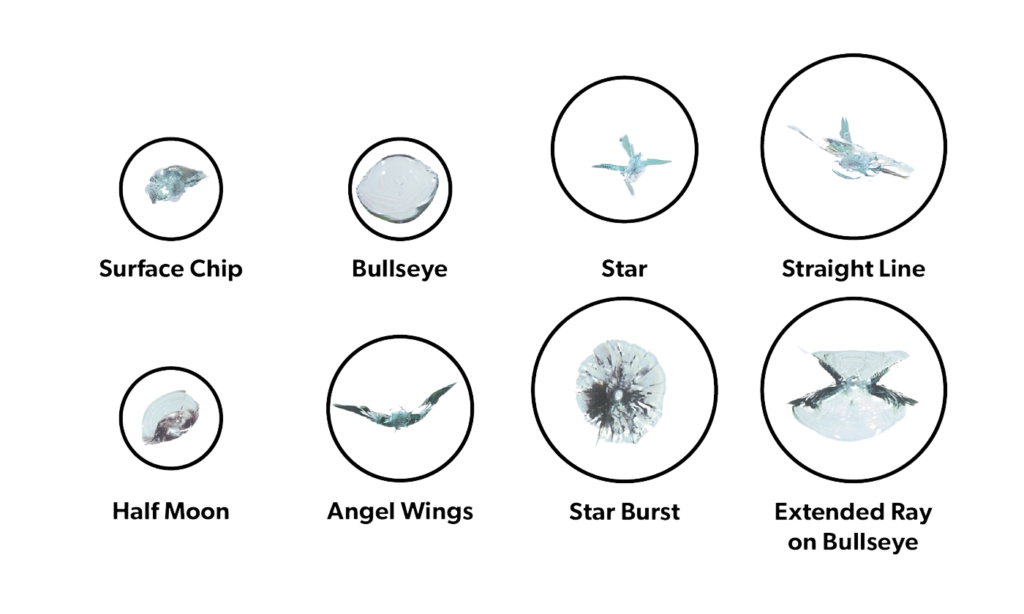
Some damage simply can’t (or shouldn’t) be fixed. Here are clear signs that it’s time to replace:
- Cracks Over 6 Inches: These long cracks are structurally compromising and usually beyond safe repair limits.
- Cracks in the Driver’s Line of Sight: Even after repair, small distortions can remain, affecting visibility and safety.
- Multiple Cracks or Chips: Too many weak points make the windshield unreliable in case of an accident.
- Edge Cracks: The edges experience more pressure and are critical to the glass’s overall strength.
- Pitted Glass: Over time, dust, sand, and debris can create micro-pits that scatter light and reduce clarity, especially when driving at night.
How Windshield Crack Repairs Work
Professional repair involves injecting a special resin into the crack or chip. This:
- Restores structural strength
- Improves visibility
- Prevents further spreading
Repairs are quick (usually under 30 minutes), affordable, and often covered by insurance.
However, even after a successful repair, minor imperfections may remain, especially with deeper or older cracks.
What If You’re Not Sure It Can Be Repaired?
If you’re uncertain how big a crack in a windshield can be repaired in your case, don’t guess. A professional like the ones at Rogueautosalon can assess the damage and recommend the safest, most cost-effective solution. Most shops offer free inspections.
How to Prevent Windshield Damage in the First Place
Cracks are often avoidable. Here’s how to protect your windshield long-term:
- 1. Inspect Regularly: Check your windshield daily for small chips or cracks before they grow.
- 2. Use a Quality Glass Protectant: Products or window films (like Ultraguard) provide a barrier against scratches and debris.
- 3. Repair Small Damage Immediately: Even tiny chips can turn into large cracks. Don’t wait.
- 4. Avoid Sudden Temperature Changes: Don’t pour hot water on an icy windshield. Use gentle defrosting methods and park in shaded areas when possible.
- 5. Keep a Safe Distance on Roads: Avoid tailgating, especially on gravel roads or near trucks, where flying debris is more likely.
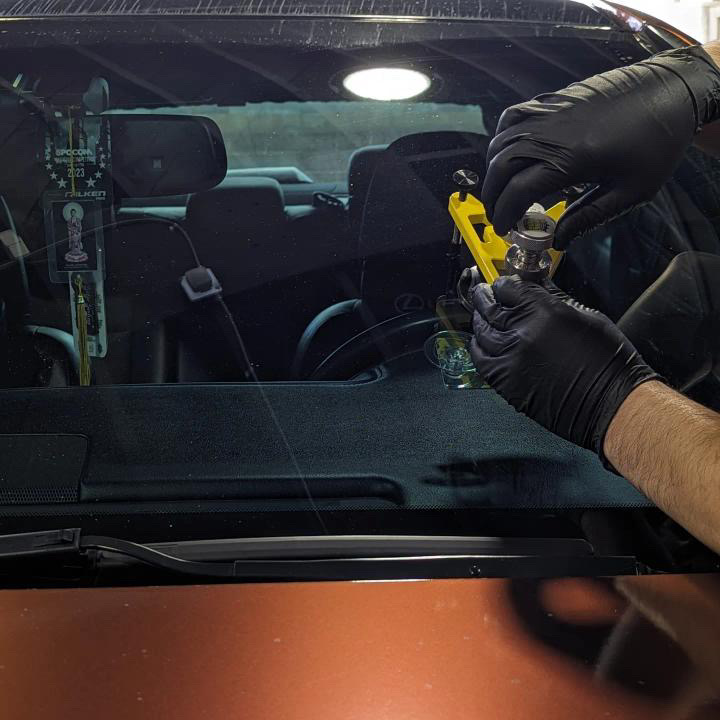
Cost Considerations: Repair vs. Replacement
- Repair Cost: $50–$150, depending on location and severity
- Replacement Cost: $200–$500+ (varies by vehicle model)
- Insurance: Many comprehensive policies cover crack repair fully
So, when possible, catching and repairing a crack early is the smart financial choice.
Final Thoughts: Don't Ignore the Crack
To recap, how big a crack in a windshield can be repaired depends on its size, location, type, and depth. Cracks under 6 inches and away from the edges or driver’s line of sight are usually fixable. Anything beyond that, or multiple damage points, generally means you’ll need a replacement.
Your windshield is critical to your safety. Don’t delay inspections or repairs. A small crack today could become a dangerous (and expensive) problem tomorrow.
If you’ve been wondering how big a crack in a windshield can be repaired, now you know: size matters, but so does location, type, and timing. The sooner you act, the better your chances of saving your windshield and your wallet.
Need help? Contact a certified auto glass technician in your area for a quick assessment. Safe driving starts with clear vision!
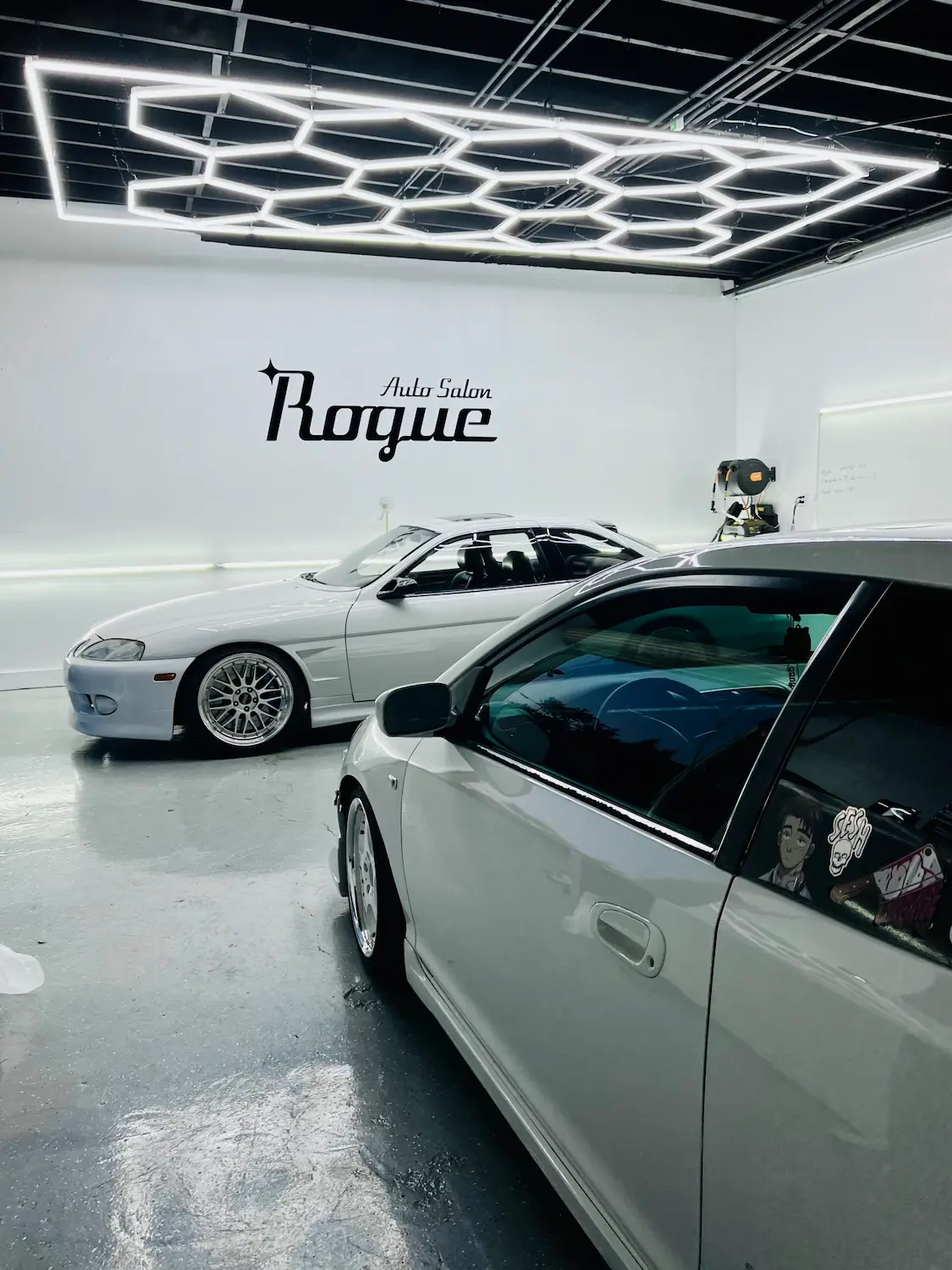
- Windshield Protection Film Installation
- Glass Polishing and Clarity Restoration
- Headlight Restoration
- Ceramic Coating for Glass Surfaces

